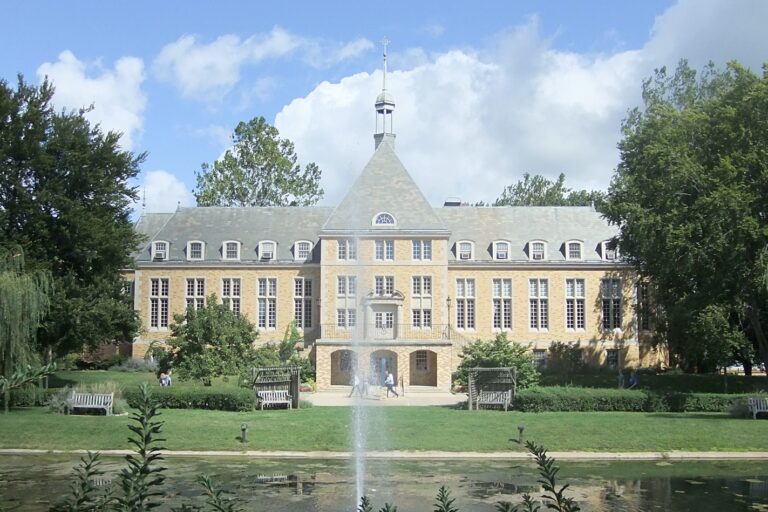This month the Supreme Court has considered two cases addressing abortion – Dobbs v. Jackson Women’s Health Organization and Whole Woman’s Health et al v. Jackson. In the oral arguments about both cases the Court’s abortion advocates warmly praised “stare decisis,” the doctrine of legal precedent. And Roe v. Wade is a “super precedent,” they said.
But what is “precedent”? And whose is it?
In deciding Roe v. Wade, the Warren Court certainly didn’t rely on precedent. The ruling overturned long-standing laws that long predated the Constitution itself.
In fact, before there was law – be it the Code of Justinian, the Magna Carta or the Constitution – there was “Thou Shalt Not Kill.” In 1973, pro-life laws in the vast majority of states enshrined that truth. But all these “precedents” were simply ignored by the majority in Roe.
Apparently, the Left can play with “precedent” at will. But Heaven forbid if the Court’s “conservatives” suggest that they should enjoy the same privilege, and throw out Roe.
Justice Sonia Sotomayor thinks this shouldn’t be allowed. In her view, that door doesn’t swing both ways. Once the progressives walk through it with some ill-considered decision, they want to lock it behind them. Since the 1960s, the progressive-domnated Court has consistently ruled to overturn long-standing laws throughout the country, many of which are as old as the country itself.
Sorting Out The Separation Of Powers
In the early days of the Republic, the Court demonstrated great respect both for tradition and for the primacy of the states in formulating law in areas where such powers were not expressly granted to the Federal Government by the Constitution.
But the seeds of judicial activism were planted as far back as Marbury v. Madison (1803), when the Court ruled that it had the power to declare state laws to be in violation of the Constitution.
The decision in Marbury was unanimous (4-0, with two justices not participating in the case), but the reception was not. According to the Federal Judicial Center’s account, “Thomas Jefferson criticized [Chief Justice John] Marshall for engaging in unnecessary editorialization, believing the case should have begun and ended with the conclusion that the Court did not have jurisdiction. Edward Corwin, one of the leading legal scholars of the first half of the twentieth century, went further, claiming the case bore ‘many of the earmarks of a deliberate partisan coup’.”
Over time, events have shown that Marshall won and Jefferson lost.
In 1907, New York Gov. Charles Evans Hughes, who later became Chief Justice of the Supreme Court, spoke to the Elmira Chamber of Commerce. “We are under a Constitution,” he told the gathering, “but the Constitution is what the judges say it is, and the judiciary is the safeguard of our liberty and of our property under the Constitution.”
Of all people, even Franklin D. Roosevelt wasn’t so sure. In his Fireside Chat to the American public on March 1, 1937, he said, “We have … reached the point as a Nation where we must take action to save the Constitution from the Court and the Court from itself. We must find a way to take an appeal from the Supreme Court to the Constitution itself. We want a Supreme Court which will do justice under the Constitution—not over it. In our courts we want a government of laws and not of men.”
But the frustrated FDR simply wanted a government of some men and not others. So he threatened to pack the Court with the right kind of “men.” The Court, duly admonished, demurred – but not for long. Twenty-one years later, Chief Justice Earl Warren, writing for a unanimous Court in Cooper v. Aaron (1958), made Hughes’s 1903 dictum “the supreme law of the land” (so much for the Supremacy Clause in Article VI of the Constitution). Citing Marbury, Warren’s opinion quoted Chief Justice Marshall: “it is emphatically the province and duty of the judicial department to say what the law is.” The Warren Court declared the principle to be “a permanent and indispensable feature of our constitutional system.”
So the Court’s power is indeed supreme. Any law, State or Federal, is fair game – and that even goes for the text of the Constitution as well. “The Constitution is what we say it is.”
But who are “we”?
Which Is More Supreme? Life? Or Roe?
Let’s look at one decision that every nominee for the Court has agreed with since it appeared: Brown v. Board of Education (1954). Brown overturned Plessy v. Ferguson, the 1896 ruling that had permitted schools to be segregated by race. Now the Court’s ruling in Plessy was almost unanimous (7-1); but there were no dissents at all when Brown v. Board overturned it (although Justice Minton complained privately that Chief Justice Warren was somewhat overbearing in pressuring the Court to make it unanimous).
So the question arises, does unanimity make a decision more powerful, or, to use Justice Breyer’s term in Dobbs, a “super- precedent”? Should unanimity be required when the Court profoundly changes the law?
And what if a ruling isn’t unanimous? Does that weaken it as a “super-precedent”? Or… as a “precedent” at all?
And does a split decision make a ruling “political”?
In McCollum v. Board of Education (1948), the Court ruled that “use of tax-supported property for religious instruction and the close cooperation between the school authorities and the religious council violated the Establishment clause.”
But it wasn’t unanimous. The vote was 7-1.In Engel v. Vitale (1962), the Court banned public schools from sponsoring a voluntary, nondenominational prayer.
But it wasn’t unanimous. The vote was 6-1, with two Justices not participating.
In Abington School District v. Schempp (1963), the Court declared that school-sponsored Bible reading was unconstitutional.
But it wasn’t unanimous. The vote was 8-1.
In Roe v. Wade (1973), the Court ruled that laws in several states that banned abortion were unconstitutional.
But it wasn’t unanimous. The vote was 7-2.
In Stone v. Graham (1980), the Court declared that posting the Ten Commandments on the walls of public school classrooms was unconstitutional.
But it wasn’t unanimous. The vote was 5-4.
In Wallace v. Jaffree (1985), the Court ruled that authorizing a one-minute period of silence in all public schools “for meditation or voluntary prayer” was unconstitutional.
But it wasn’t unanimous. The vote was 6-3.
In Planned Parenthood v. Casey (1992), the Court upheld the constitutional right to have an abortion that was established in Roe v. Wade (1973).
But it wasn’t unanimous. The vote was 6-3.
In Lee v. Weisman (1992), the Court ruled that a middle school practice of inviting a clergyman to offer an opening invocation and a closing benediction at a graduation ceremony was unconstitutional.
But it wasn’t unanimous. The vote was 5-4.
In Santa Fe Independent School District v. Doe (1995), the Court ruled that a policy allowing students to elect a student say a prayer before a school football game was unconstitutional.
But it wasn’t unanimous. The vote was 6-3.
In Lawrence v. Texas (2003), the Court declared that state laws criminalizing sodomy were unconstitutional.
But it wasn’t unanimous. The vote was 6-3.
In Obergefell v. Hodges (2015), the Court declared that state laws defining marriage as the union of one man and one woman were unconstitutional.
But it wasn’t unanimous. The vote was 5-4.
Every one of these decisions reversed long-standing precedent, rejected the views of the majority of Americans, defied the natural law, and offended the civic virtue of a moral population. Yet the Left cheered each one.
In the Court’s arguments on Dobbs, Justice Sotomayor archly implied that overturning Roe would be “political.” She undoubtedly supports all the above decisions. Would she find them to be “political” because they weren’t unanimous?
Or does that door swing only one way?
Let’s face it. Justice Sotomayor exudes the spirit of Justice Ruth Bader Ginsberg, an icon of the legal Left. We recall Ginsberg’s casual observation in 2009 that Roe was based not on “precedent” or “stare decisis,” but on “a concern about population growth and particularly growth in populations that we don’t want to have too many of” that prevailed at the time Roe was decided.
Around the country, as the Court deliberates on Dobbs and Whole Women’s Health, State Legislatures are considering laws that restore the right to life of the unborn. We can expect manty of them quickly to expand their view to address other fundamental freedoms as well – the freedom to pray in public schools, to display the Ten Commandments in public buildings, to allocate public education funding to religious, schools, to restore the definition of marriage as the union of one man and one woman, and many more.
“The Constitution is what we say it is,” said the Warren Court 63 years ago. In coming years, if the new conservative majority stays true to its principles, abortion advocates and others on the secular Left today might well regret that they had so warmly embraced that precedent for so long.











